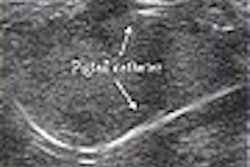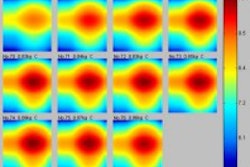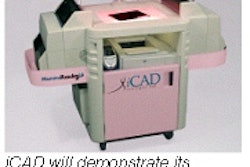VIENNA - A hospital in the U.K. is reporting good results from a program that has specially trained radiographers providing initial interpretations of screening mammograms. The radiographers are producing accuracy ratings almost identical to those of radiologists, and the clinic's patients have responded favorably to the program.
Doncaster and Bassetlaw Hospitals NHS Trust in Doncaster implemented the program after experiencing an increasing number of referrals to its rapid-access breast clinic. The patient volume was outstripping the center's ability to provide service while still maintaining its existing wait times of two weeks for urgent cases, and four weeks for nonurgent cases. The hospital wanted to open another clinic, but its two staff breast radiologists would not have been able to deal with the patient volume created by a new center, according to Deena Kasir, who presented the study at the ECR meeting.
The hospital settled on a creative solution to its dilemma -- it went ahead and set up the new clinic, but arranged to have studies reviewed initially by two radiographers who had received special training in mammography and breast ultrasound. Their work would be reviewed later by breast radiologists, who would be responsible for recalling patients for additional studies if needed, Kasir said.
To reduce the number of recalls, the hospital created a set of criteria for those patients who would be directed to the new clinic. Acceptable patients included those with breast pain, palpable masses, and nipple discharge or Paget's disease. Patients who would not be sent to the clinic included those younger than 35, those with clinically obvious cancer, pregnant and lactating women, and those with axillary problems that require an axillary ultrasound.
The clinic opened in January 2000, and Kasir's group initiated a study to assess the radiographers' performance. They tracked 511 patients ranging in age from 35-87, with a mean age of 49. The median follow up for cancer patients was 99 weeks and for noncancer patients, 85 weeks.
Malignancies were detected in 41 patients. The radiographers classified 36 cases as definitely abnormal, while the radiologists classified 34 cases in this way. The radiographers produced one false-negative case that was picked up by the radiologist reviewing the study and confirmed as malignant after biopsy.
Both the radiographer and the radiologists classified one patient as having a lesion with benign features. This patient later presented with a malignancy a few months later on a follow-up study. Kasir said this patient probably represented a case of interval cancer.
Of the 471 patients without cancer, the radiographers reported two patients to have suspicious lesions, with biopsy later showing them to be benign. The radiographers reported 19 patients in the noncancer group as having intermediate lesions; Kasir attributed this high rate to overcaution on the part of the radiographers as they adjusted to the new experience of reading mammograms.
The radiographers reported sensitivity in mammography reporting of 91%, specificity of 93%, and accuracy of 93%. Ultrasound performed by radiographers had a sensitivity of 96%, specificity of 92%, and accuracy of 93%. The performance of the radiographers was comparable to that of radiologists for both malignant and benign patients, Kasir said.
"Trained radiographers can provide preliminary reporting in rapid-access breast clinics," Kasir said. "With suitable patient selection, the need for repeat investigation can be minimized."
In the question-and-answer session following her presentation, Kasir said her institution had received no complaints about the program from patients, who were informed that a radiographer would be providing an initial read with a radiologist reviewing the exam later. The program has reduced costs at the clinic by about 10%-15%, she said.
By Brian CaseyAuntMinnie.com staff writer
March 11, 2003
Related Reading
RTs score well in breast imaging classification, January 22, 2003
Radiologists, technologists get comparable grades reading virtual colonoscopy, December 2, 2002
The parlous state of UK radiology, September 24, 2002
Radiology service not keeping up with routine demand in UK, August 8, 2002
Copyright © 2003 AuntMinnie.com



















